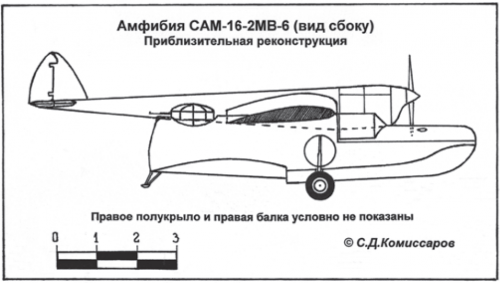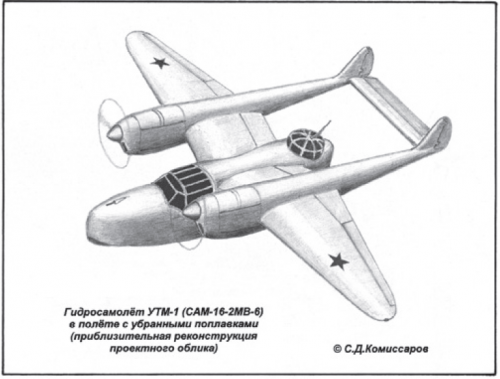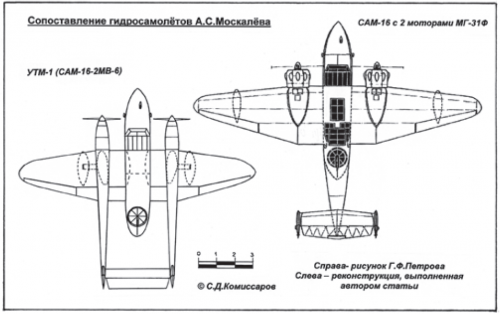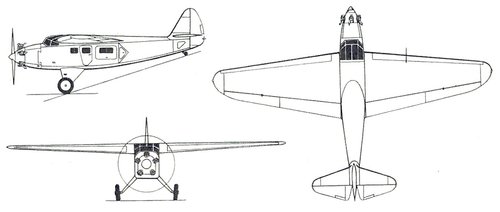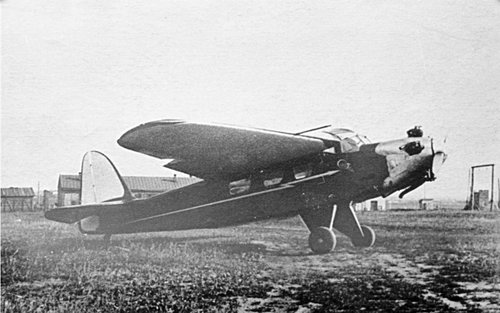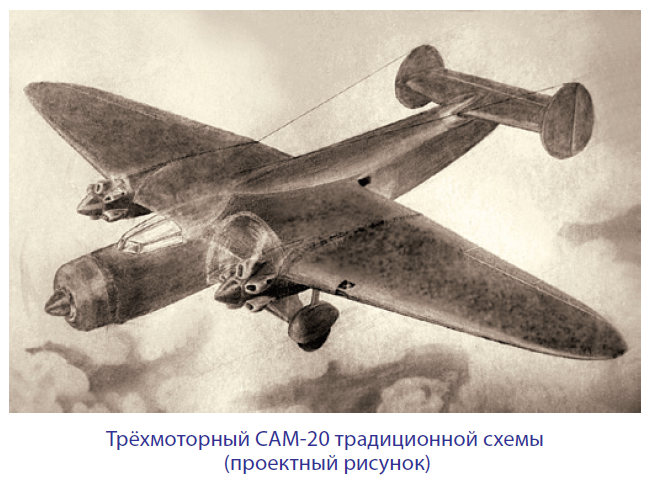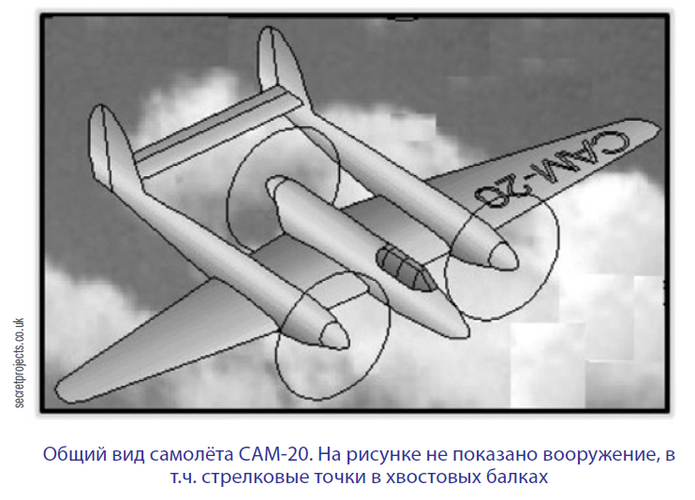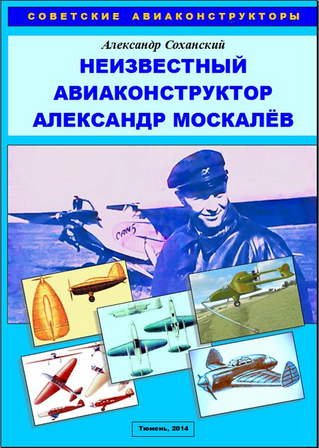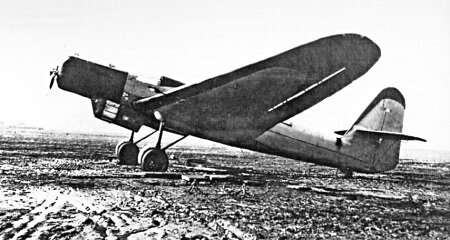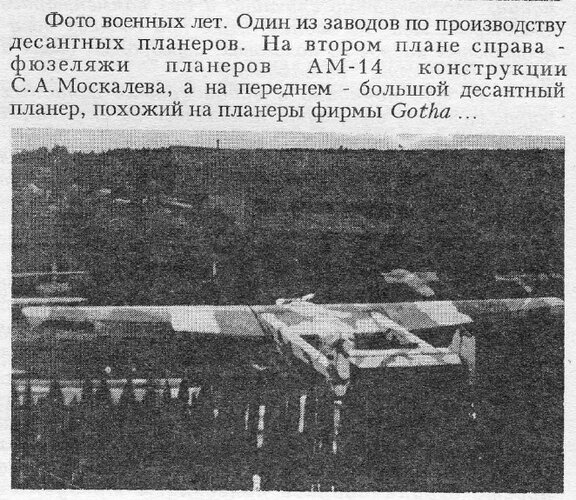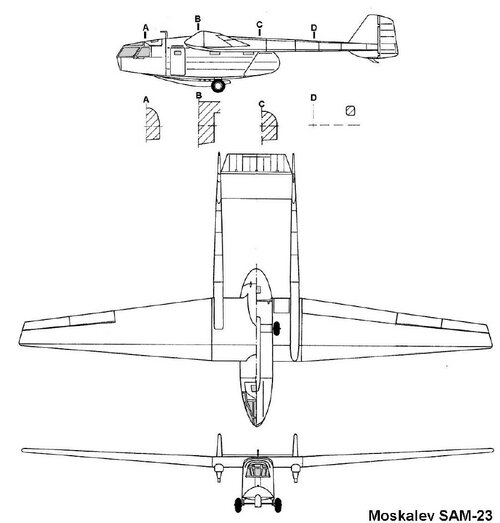Type: special modification of long-range bomber type DB-1 (ANT-36) acting as an air test site
Purpose: verification of the operation of the AN-1 type diesel engine from the A.D. workshop. Čaromský under real conditions
Produced: one example (created by conversion of the eighth production DB-1)
Users: none
Crew: two pilots and a navigator
Power: one Charomsky AN-1 diesel engine with a maximum power of 800 hp
Armament: ?
Differences from the DB-1 (ANT-36) aircraft:
- installation of 800 hp liquid-cooled diesel 12-cylinder type AN-1 in the bow of the fuselage in place of 830 hp gasoline liquid-cooled 12-cylinder type M-34R.
- installation of a three-bladed metal propeller with a diameter of 3.40 m in place of a two-bladed wooden propeller
- new design of engine bed and engine hood. The hood of this model has a more angular profile.
- different shape of the tunnel cover of the water cooler, which is located on the belly of the engine hood. The water cooler cover of this model has a box shape, while the water cooler cover of the DB-1 model has a rounded profile.
- installation of a fixed main landing gear in place of a retractable landing gear
History: Between 1931 and 1933, at CIAM (Central Institute of Aircraft Engines), Charomsky designed and built a prototype of the first Soviet diesel aircraft engine, which became known as the AN-1. The mentioned engine was designed as a liquid-cooled fork 12-cylinder and had a take-off power of 800 hp. At the end of 1935, the decision was made to install the AN-1 type engine in the airframe of the long-range bomber type DB-1 (ANT-36), which was nothing more than a modification of the long-range record special RD type (ANT-25). According to preliminary calculations, the AN-1 engine was supposed to provide this machine with a respectable range of 25,000 km.
Tupolev first entrusted this task to K.A. Kalinin, because it was at that time that he held the post of chief designer of the Voronezh Plant No. 18, where the DB-1 type airplane was produced. But because Kalinin was busy with work on his K-12 type airplane, he refused to deal with the adaptation of the airframe of the DB-1 type airplane to the installation of the AN-1 type engine (in place of the M-34R type engine). Therefore, the aforementioned task was finally undertaken by the young designer S.A. Moskalev. At the same time, Moskalev was given only one month to complete all the work on this topic. Since the AN-1 type engine had a higher weight than the M-34R type engine (1,341 kg vs 1,050 kg), it was necessary to design not only a new hood, but also a new engine bed for the aforementioned engine. For the same reason, it was also necessary to strengthen the construction of some parts of the kite.
The eighth serial specimen of the DB-1 type airplane (no. 188) was modified for the AN-1 type engine air test site, which became known as RDD. But the RDD-type special had all the shortcomings that plagued the serial DB-1. And there weren't a lot of them. In addition, plant No. 18 was unable to equip it with a retractable undercarriage. In addition, because the wing beams of the RDD type aircraft did not meet the requirements for strength and significant forces were to be transmitted to it from the AN-1 engine, it was forbidden to exceed the take-off weight of 6,500 kg and a speed of 200 km/h with the mentioned machine. However, this did not prevent the RDD type aircraft from fulfilling its task, which was to verify the operation of the AN-1 type engine in flight. Race tests of the mentioned machine started on March 9, 1936.
The only specimen of the RDD type special took to the skies for the first time on March 20 of the same year. On April 1, 1936, however, the tests of this machine were suspended by damage to the compressor of the power unit. In May of the same year, a new engine was therefore installed in the bow of the fuselage of the only specimen of the RDD type special. After that, preparations began to take him to the state exams. The AN-1 type engine on the RDD type aircraft passed the 50-hour operational state test between June 14 and November 23, 1936.
The state tests of the mentioned engine were concluded with a positive evaluation. The AN-1 type engine had some 20 to 25% lower consumption than an equally powerful gasoline engine. However, higher fire safety also spoke for the mentioned engine. Due to the absence of a carburetor, magneto and spark plugs, it was also simpler compared to a gasoline engine. The same also applied to his staff.

